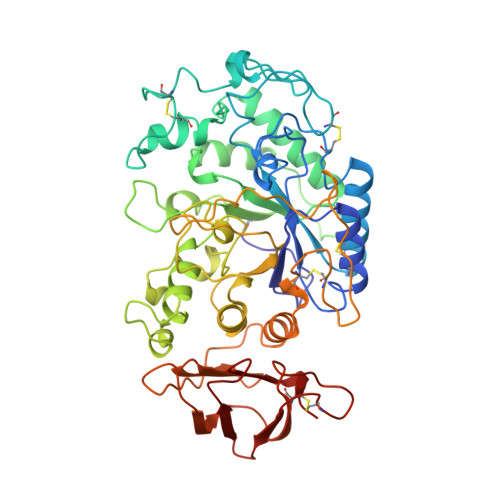Structure of a pancreatic alpha-amylase bound to a substrate analogue at 2.03 A resolution.
Qian, M., Spinelli, S., Driguez, H., Payan, F.(1997) Protein Sci 6: 2285-2296
- PubMed: 9385631
- DOI: https://doi.org/10.1002/pro.5560061102
- Primary Citation of Related Structures:
1JFH - PubMed Abstract:
The structure of pig pancreatic alpha-amylase in complex with carbohydrate inhibitor and proteinaceous inhibitors is known but the successive events occurring at the catalytic center still remain to be elucidated. The X-ray structure analysis of a crystal of pig pancreatic alpha-amylase (PPA, EC 3.2.1.1.) soaked with an enzyme-resistant substrate analogue, methyl 4,4'-dithio-alpha-maltotrioside, showed electron density corresponding to the binding of substrate analogue molecules at the active site and at the "second binding site." The electron density observed at the active site was interpreted in terms of overlapping networks of oligosaccharides, which show binding of substrate analogue molecules at subsites prior to and subsequent to the cleavage site. A weaker patch of density observed at subsite -1 (using a nomenclature where the site of hydrolysis is taken to be between subsites -1 and +1) was modeled with water molecules. Conformational changes take place upon substrate analogue binding and the "flexible loop" that constitutes the surface edge of the active site is observed in a specific conformation. This confirms that this loop plays an important role in the recognition and binding of the ligand. The crystal structure was refined at 2.03 A resolution, to an R-factor of 16.0 (Rfree, 18.5).
Organizational Affiliation:
AFMB-IBSM-CNRS, Marseille, France.


















